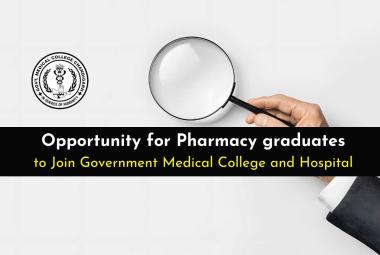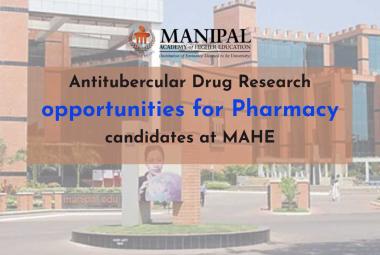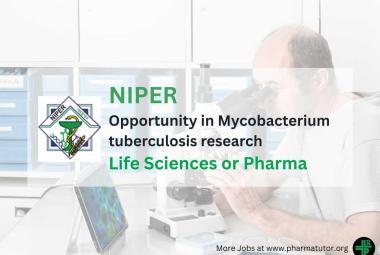 About Authors:
About Authors:
Patel Chirag J*1, Prof. Satyanand Tyagi2, Patel Pinkesh1, Umesh Kumar1, Patel Jaimin1, Chaudhari Bharat1
1Department of Pharmaceutics, Maharishi Arvind Institute of Pharmacy, Mansarovar, Jaipur, Rajasthan, India-302020.
*Mr. Chirag Patel has published various Books, Research and Review articles. His academic works include 35 Publications (2 books was published in Lambert Academic Publishing, Germany & 8 Research Articles and 25 Review Articles was published in standard and reputed National and International Pharmacy journals)
2President & Founder, Tyagi Pharmacy Association (TPA) & Scientific Writer (Pharmacy), Chattarpur, New Delhi, India-110074.
*chirag.bangalore@gmail.com, +91-8000501871
ABSTRACT:
Aquasomes are spherical in shape with 60–300 nm particles size used for drug and antigen delivery. Aquasomes are nanoparticulate carrier systems but instead of being simple nanoparticles these are three layered self assembled structures, comprised of a solid phase nanocrystalline core coated with oligomeric film to which biochemically active molecules are adsorbed with or without modification. These structures are self assembled by non covalent and ionic bonds. The solid core provides the structural stability, while the carbohydrate coating protects against dehydration and stabilizes the biochemically active molecules. Properties like protection and preservation of fragile biological molecules, conformational integrity, and surface exposure made it as a successful carrier system for bioactive molecules like peptide, protein, hormones, antigens and genes to specific sites. Three types of core materials are mainly used for producing aquasomes: tin oxide, nanocrystalline carbon ceramics (diamonds) and brushite (calcium phosphate dihydrate). Calcium phosphate is the core of interest, owing to its natural presence in the body. Aquasome deliver their content through specific targeting and slow sustained release process.
[adsense:336x280:8701650588]
Reference Id: PHARMATUTOR-ART-1574
INTRODUCTION
Nanobiopharmaceutics involves delivery of biopharmaceutical product through different biomaterials like multifunctional nanoparticles, quantum dots, aquasomes, superparamagnetic iron oxide crystals, liposomes, niosomes and dendrimers [1]. There are different types of ‘somes’ like Aquasomes (Carbohydrates-ceramic nanoparticles) are the nano-biopharmaceutical carrier system contains the particle core composed of nanocrystalline calcium phosphate or ceramic diamond, and is covered by a polyhydroxyl oligomeric film [1, 2]. Kossovsky proposed a system to prepare nanoparticles transporting the so-called aquasomes, whose particle size (lower than 1000 nm), is appropriate to parenteral administration because it prevents the obstruction into the bloodstream capillaries. Alternatively aquasomes are called as “bodies of water” [3, 4].
These three layered structure are self assembled by non-covalent bonds. Principal of “self assembly of macromolecule” is governed by three physiochemical process:
1. Interaction between charged group: The interaction of charged group facilitates long range approach of self assembly sub units charge group also plays a role in stabilizing tertiary structures of folded proteins. The intrinsic chemical groups or adsorbed ions from the biological milieu lend to most biological and synthetic surfaces a charge polarity. Most biochemically relevant molecules, in fact are amphoteric. The interactions of charged groups such as amino-, carboxyl-, sulfate-, and phosphate-groups, facilitate the long range approach of self assembling subunits. The long range interaction of constituent subunits beginning at an intermolecular distance of around 15 nm, is the necessary first phase of self assembly. With hydrophobic structures, long range forces may extend up to 25 nm. Charged groups also play a role in stabilizing tertiary structures of folded proteins [1, 5].
2. Hydrogen bonding and dehydration effect: Hydrogen bond helps in base pair matching and stabilization secondary protein structure such as alpha helices and beta sheets. Molecules forming hydrogen bonds are hydrophilic and this confers a significant degree of organization to surrounding water molecules. In case of hydrophobic molecules, which are incapable of forming hydrogen bond, their tendency to repel water helps to organize the moiety to surrounding environment, organized water decreases level of entropy and is thermodynamically unfavorable, the molecule dehydrate and get self assembled [1, 5].
[adsense:468x15:2204050025]
3. Structural stability of protein in biological environment: determined by interaction between charged group and Hydrogen bonds largely external to molecule and by van der waals forces largely internal to molecule experienced by hydrophobic molecules, responsible for hardness and softness of molecule and maintenance of internal secondary structures, provides sufficient softness, allows maintenance of conformation during self assembly. Self assembly leads to altered biological activity, van der waals need to be buffered. In aquasomes, sugars help in molecular plasticization [1, 5].
Conformational integrity of aquasomes exploited as a red blood cell substitutes, vaccines for delivery of viral antigen (Epstein-Barr and Immune deficiency virus) to evoke correct antibody and as targeted system for intracellular gene therapy. Enzyme activity and sensitivity towards molecular conformation made aquasome as a novel carrier for enzymes like DNAses and pigment/dyes [1].
PROPERTIES OF AQUASOMES
- Aquasomes possess large size and active surface hence can be efficiently loaded with substantial amounts of agents through ionic, non co-valent bonds, van der waals forces and entropic forces. As solid particles dispersed in aqueous environment, exhibit physical properties of colloids.
- Aquasomes mechanism of action is controlled by their surface chemistry. Aquasomes deliver contents through combination of specific targeting, molecular shielding, and slow and sustained release process.
- Aquasomes due to their size and structure stability, avoid clearance by reticuloendothelial system or degradation by other environmental challenges.
- Aquasomes water like properties provides a platform for preserving the conformational integrity and bio chemical stability of bio-actives.
- In normal system, calcium phosphate is biodegradable. Biodegradation in vivo achieved by monocytes and multicellular cells called osteoclast. Two types of phagocytosis reported, either crystals taken up alone and then dissolved in cytoplasm after disappearance of phagosome membrane or dissolution after formation of heterophagosome [4, 6, 7].
NOW YOU CAN ALSO PUBLISH YOUR ARTICLE ONLINE.
SUBMIT YOUR ARTICLE/PROJECT AT articles@pharmatutor.org
Subscribe to Pharmatutor Alerts by Email
FIND OUT MORE ARTICLES AT OUR DATABASE
STRATEGIES USED IN CHEMICAL SYNTHESIS OF NANOSTRUCTURE
Aquasomes are self-assembled three layerednanostructures. Therefore the strategies involved in chemicalsynthesis of nanostructure need elaboration. The strategiesnormally used in the chemical synthesis of nanostructures arediscussed below.
1. Sequential covalent synthesis
This can be used to generate arrays of co-valently linked atoms generated with well defined composition, connectivity and shape i.e. vitamin B12. It can generate the structures that are far from the thermodynamic minimum for that collection of atoms [8, 9].
2. Covalent polymerization
This strategy is used for preparing molecules with high molecular weight. Here a relatively simple low weight substance is allowed to react with itself to produce molecule comprising many covalently linked monomers. For example: Formation of polyethylene from ethylene. The molecular weight of polyethylene can be high (>106 Daltons), and it is easily prepared, but the molecular structure is simple and repetitive and the process by which it is formed offers only limited opportunity for controlled variation in the structure or for control of its three dimensional shape. Polymerization indirectly provides synthetic routes to stable nanostructures e.g. phase separated polymers [10].
3. Self –organizing synthesis
This strategy abandons the covalent bond as required connection between atoms and relies instead on weaker and less directional bonds such as ionic, hydrogen and van der waals interactions to organize atoms, ions or molecules into structures. The different type of structures prepared by this stratergy includes molecular crystals, ligand crystals, colloids, micelles, emulsions, phase separated polymers and self assembled monolayer. Self organization is the peculiar feature of these methods. The molecules or ions adjust their own position to reach thermodynamic minimum. By self-organization, true nanostructures can be prepared [8, 11].
4. Molecular self assembly
It is the spontaneous assembly of molecules into structured, stable, non-covalently joined aggregates. Molecular self-assembly combines features of each preceding strategies to make large structurally well defined assemblies of atoms: Formation of well defined molecules of intermediate structural complexity through sequential covalent synthesis. Formation of large, stable structurally defined aggregates of these molecules through ionic, hydrogen and van der waals interactions or other non covalent links. The key to this type of synthesis is to understand and overcome intrinsically unfavorable entropy together in a single aggregate. For final assembly to be stable and to have well defined shape, the non covalent connection between molecules must be stable. The strength of the individual Vander waals interactions and hydrogen bonds are weak (0.1 to 5 Kcal/mole) relative to typical covalent bonds (40 to 100 Kcal/mole) and comparable to thermal energies. Thus to achieve acceptable stability, molecules in self assembled aggregates must be joined by many of these weak noncovalent interaction or by multiple hydrogen bonds or both [8].
OBJECTIVE BEHIND DEVELOPMENT OF AQUASOMES
Firstly, aquasomes protect bio-actives. Many other carriers like prodrugs and liposomes utilized but these are prone to destructive interactions between drug and carrier. The drugs are often inevitable and these always bring limitation to drug delivery system. In such case aquasomes proof to be worthy carrier, which are comprised of solid carriers whose film has been treated with a film of carbohydrate to prevent destructive denaturing interaction between drug and solid carriers [8].
Secondly aquasomes maintains molecular confirmation and optimum pharmacological activity. Normally, active molecules possess following qualities i.e. a unique three-dimensional conformation, a freedom of internal molecular rearrangement induced by molecular interactions and a freedom of bulk movement. This is to be maintained for optimal pharmacological activity. Dehydration, degradation and decomposition can change these spatial qualities. Many of the biological molecules like proteins undergo irreversible denaturation and become non functional when desiccated, at the same time, they are not resistant to denaturation for a long time in aqueous state. In the aqueous state pH, temperature, solvents, salts etc. can cause denaturation. So the challenge is to maintain water like circumstance otherwise it may lead to dehydration and conformational changes, which in turn lead to degradation and alteration of chemical composition. The intrinsic biophysical constraints, dehydration and conformational changes caused by the drug delivery system can lead to adverse or allergic reaction with suboptimal pharmacological activity. By incorporating such biological molecules on aquasomes with natural stabilizers one can preserve the molecular conformation since these natural sugar acts as dehydroprotectant. Sugars and polyols stabilize protein against heat denaturation and stabilization is due to the effect of sugars and polyols on hydrophobic interactions. The extent of stabilization by different sugars and polyols is explained by different influences on structure of water. The hydroxyl group on carbohydrate interacts with polar and charged groups of biological molecules in a manner similar to water molecules alone and preserves the aqueous structure of biological molecules like protein on dehydration. Since these disaccharides are rich in hydroxyl groups and help to replace water around the polar residues in proteins, thus maintaining their integrity in the absence of water. The free mobility associated with rich hydroxyl component creates a unique hydrogen binding subsrate that produces glassy aqueous state [12, 13]. There are many systemic biophysical and intrinsic biophysical constraints, which tend to destabilize the drug.
METHOD OF PREPARATION OF AQUASOMES[1, 7, 14]
The general procedure consists of an inorganic core formation, which will be coated with Lactose forming the polyhydroxylated core that finally will be loaded by model drug .By using the principle of self-assembly, the aquasomes are prepared in three steps i.e., preparation of core, coating of core, and immobilization of drug molecule.
1. Preparation of the core: The first step of aquasome preparation is the fabrication of the ceramic core. The process of ceramic core preparation depends on the selection of the materials for core. These ceramic cores can be fabricated by colloidal precipitation and sonication, inverted rnagnetron sputtering, plasma condensation and other processes. For the core, ceramic materials were widely used because ceramics are structurally the most regular materials known. Being crystalline, the high degree of order in ceramics ensures that any surface modification will have only a limited effect on the nature of the atoms below the surface layer and thus the bulk properties of the ceramic will be preserved. The high degree of order also ensures that the surfaces will exhibit high level of surface energy that will favor the binding of polyhydroxy oligomeric surface film. Two ceramic cores that are most often used are diamond and calcium phosphate.
2. Carbohydrate coatings: The second step involves coating by carbohydrate on the surface of ceramic cores. There are number of processes to enable the carbohydrate (polyhy-droxy oligomers) coating to adsorb epitaxially on to the surface of the nano-crystalline ceramic cores. The processes generally entail the addition of polyhydroxy oligomer to a dispersion of meticulously cleaned ceramics in ultra pure water, sonication and then lyophilization to promote the largely irreversible adsorption of carbohydrate on to the ceramic surfaces. Excess and readily desorbing carbohydrate is removed by stir cell ultra-filtration. The commonly used coating materials are cellobiose, citrate, pyridoxal-5-phosphate, sucrose and trehalose.
3. Immobilization of drugs: The surface modified nano-crystalline cores provide the solid phase for the subsequent nondenaturing self assembly for broad range of biochemically active molecules. The drug can be loaded by partial adsorption.
CHARACTERIZATION OF AQUASOMES
Aquasomes are mainly characterized for structural analyses, particle size, and morphology. These are evaluated by X-ray powder diffractometery, transmission electron microscopy, and scanning electron microscopy. The morphology and the size distribution were obtained through images of scanning electron microscopy. The chemical composition and the crystalline structure of all samples were obtained through X-ray powder diffractometery. In this technique, the x-ray diffraction pattern of the sample is compared with the standard diffractogram, based on which the interpretations are made [15].
APPLICATIONS OF AQUASOMES
1. Aquasomes as red blood cell substitutes, haemoglobin immobilized on oligomer surface because release of oxygen by haemoglobin is conformationally sensitive. By this toxicity is reduced, haemoglobin concentration of 80% achieved and reported to deliver blood in non linear manner like natural blood cells [4, 5].
2. Aquasomes used as vaccines for delivery of viral antigen i.e., Epstein-Barr and Immune deficiency virus 31 to evoke correct antibody, objective of vaccine therapy must be triggered by conformationally specific target molecules [1, 4].
3. Aquasomes have been used for successful targeted intracellular gene therapy, a five layered composition comprised of ceramic core, polyoxyoligomeric film, therapeutic gene segment, additional carbohydrate film and a targeting layer of conformationally conserved viral membrane protein [1, 4].
4. Aquasomes also used for delivery of enzymes like DNAase and pigments/dyes because enzymes activity fluctuates with molecular conformation and cosmetic properties of pigments are sensitive to molecular conformation [1, 5].
5. Aquasomes for pharmaceuticals delivery i.e. insulin, developed because drug activity is conformationally specific. Bio activity preserved and activity increased to 60% as compared to i.v. administration and toxicity not reported [4].
CONCLUSION
Aquasomes represent one of the simplest yet a novel drug carrier based on the fundamental principle of self assembly. Molecular plasticizer, carbohydrates prevent the destructive drug carrier interaction and helps to preserve the spatial qualities and the crystalline nature of core, gives structural stability and overall integrity. The drug candidates delivered through the aquasomes show better biological activity even in case of conformationally sensitive ones. This is probably due to the presence of the unique carbohydrate coating the ceramic. Also these formulations have been found to evoke a better immunological response and could be used as immune adjuvant for proteinaceous antigens. This approach thus provides pharmaceutical scientists with new hope for the delivery of bioactive molecules. Still, considerable further study of aquasomes is necessary with respect to pharmacokinetics, toxicology, and animal studies to confirm their efficiency as well as safety, so as to establish their clinical usefulness and to launch them commercially.
REFERENCES
1. Vishal S, Parth P, “Aquasomes: A novel carrier for drug delivery.” IJPSR, 2012, 3 (3), 688-694.
2. Vyas SP, Khar RK, Targeted & controlled Drug Delivery, CBC Publisher & distributors, New Delhi, 2004, pp. 28-30.
3. Kossovsky N, Gelman A, Sponsler ED, Millett D. “Nano-crystalline Epstein-Bar Vims decoys” Appl. Biomater, 1991, 2, 251-259.
4. Kossovsky N, Bunshah RF, Gelmm A, Sponsler ED, Dmarjee DM, Suh TG, Pralash S, Doel HJ, Deshpandey CV, “A non-denaturing solid phase pharmaceutical carrier comprised of surfacemodified nanocrystalline materials”, Appl. Biomater., 1990, 2, 233-241.
5. Kossovsky, Gelman A, Sponsler EE, “Cross linking encapsulated haemoglobin solid phase supports: lipid enveloped haemoglobin adsorbed to surface modified ceramic particles exhibit physiological oxygen lability artif. cells blood sub.” Biotech, 1994, 223, 479-485.
6. Bauman H, Gauldie J, “The acute phase response”, Immunol. Today 1994, 15, 74-78.
7. Sethi P, Sharma A, Patel SN, Singhai AK, “Aquasome- A novel carrier system”, IJPLS, 2010, 1 (4), 222-225.
8. Sanjay SJ, Pramod SJ, Neha MD, Kisan RJ, Vilasrao JK, “Aquasomes: A novel drug carrier”, Journal of Applied Pharmaceutical Science, 2012, 02 (01), 184-192.
9. Frankel DA, Lamparski HLU, O’ Brien DF, “Photoinduced destabilization of bilayered vesicles”, J Am. Chem. Soc., 1989, 111, 9262.
10. Crowe JH, Crowe LM, Jackson SA, “Preservation of Structural and functional activity in lyophilized sarcoplasmin reticulum” J Am. Chem. Soc., 1983, 220 (2), 477-484.
11. Haberland ME, Fless GM, Scannu AM, Fogelman AM, “Malondiaalde hyde de modification of lipoprotein produces avid uptake by human monocytes macrophages”, J. boil. chem., 1992, 267, 4143-4159.
12. Dunitz JD, “The entropic cost of bound water in crystals and biomolecules”, Sciences, 1994, 264, 670.
13. Franks F, “Long term stabilization of biological”, Bio/Technology, 1994, 12, 253.
14. Bhave S, Sewak P, Saxena J, “Nanoparticles. A new colloidal drug delivery system”, The Eastern pharmacist, 1998, 17-21.
15. Kossovsky N, Millett D, “Materials biotechnology and blood substitutes.” Matr. Res. Soc. Bull., 1991, 78-81.
NOW YOU CAN ALSO PUBLISH YOUR ARTICLE ONLINE.
SUBMIT YOUR ARTICLE/PROJECT AT articles@pharmatutor.org
Subscribe to Pharmatutor Alerts by Email
FIND OUT MORE ARTICLES AT OUR DATABASE









